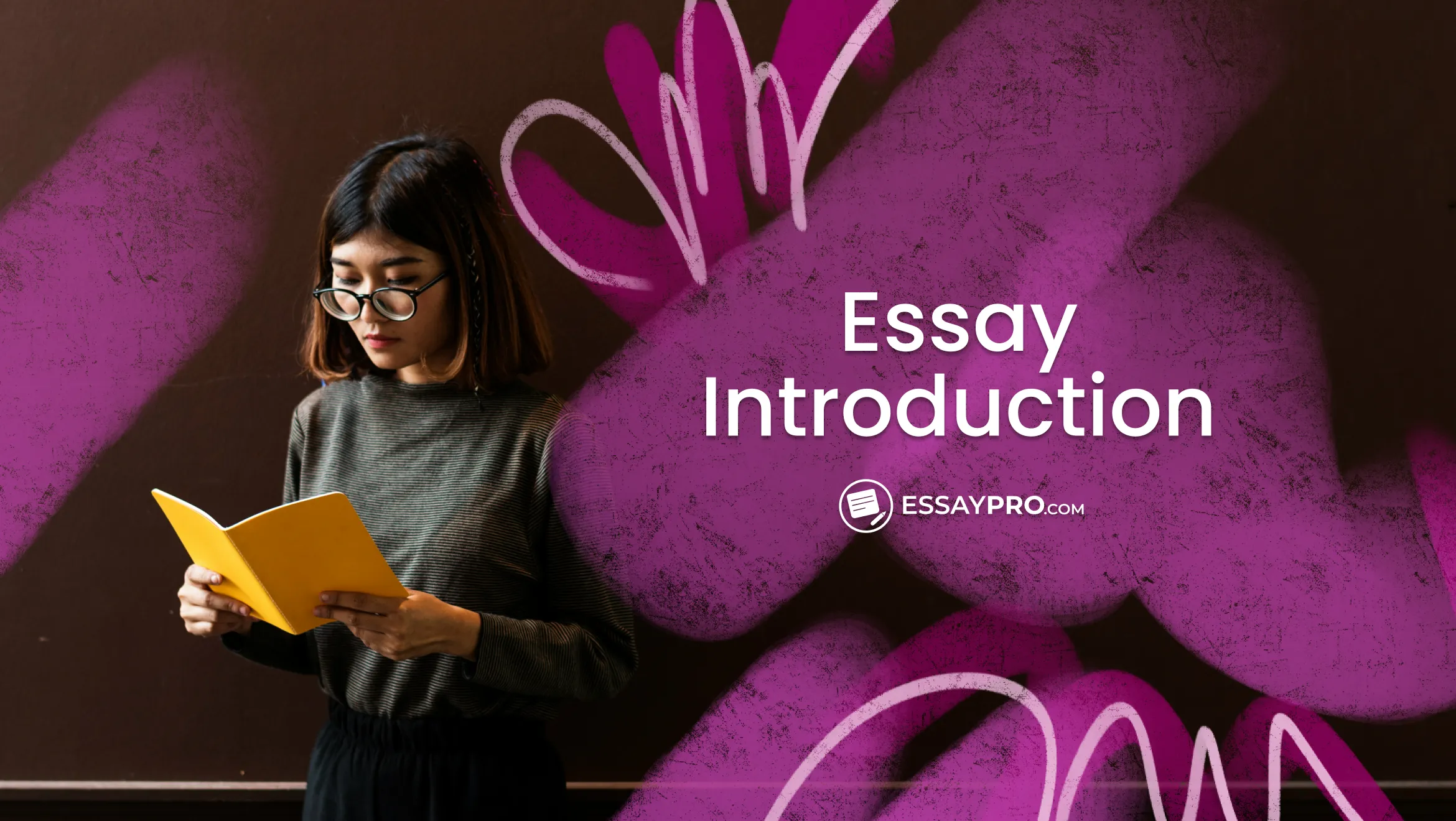A visual analysis essay is an entry-level essay sometimes taught in high school and early university courses. Both communications and art history students use visual analysis to understand art and other visual messages. In our article, we will define the term and give an in-depth guide on how to look at a piece of art and write a visual analysis essay. Stay tuned until the end for a handy visual analysis essay example from our graduate paper writing service.
What Is Visual Analysis?
Visual analysis is essential in studying Communication, English, and Art History. It's a fundamental part of writing about art found in scholarly books, art magazines, and even undergraduate essays. You might encounter a visual analysis as a standalone assignment or as part of a larger research paper.
When you do this type of assignment, you're examining the basic elements of an artwork. These include things like its colors, lines, textures, and size. But it goes beyond just describing these elements. A good analysis also considers the historical context in which the artwork was created and tries to understand what it might mean to different people.
It also encourages you to look closely at details and think deeply about what an artwork is trying to say. This kind of analysis makes you appreciate art more and teaches you how to explain your ideas clearly based on what you see in the artwork.
What is the Purpose of Visual Analysis?
The purpose of a visual analysis is to recognize and understand the visual choices the artist made in creating the artwork. By looking closely at different elements, analysts can learn a lot about how an artwork was made and why the artist made certain choices.
For example, studying how colors are used or how things are arranged in the artwork can reveal its themes or the emotions it's trying to convey. Also, understanding the time period when the artwork was created helps us see how societal changes and cultural ideas influenced its creation and how people reacted to it.


How to Write a Visual Analysis Step-by-Step
To create an insightful visual analysis, you should not only examine the artwork in detail but also situate it within a broader cultural and historical framework. This process can be broken down into three main steps:
- Identifying, describing, and analyzing the visual material
- Situating the visual material in its context
- Interpreting and responding to the content of the visual material.
Let’s discuss each of these steps in more detail.
Step 1: Identify, Describe, and Analyze the Visual Material
Begin by clearly identifying the visual material you will analyze. This could be a painting, photograph, sculpture, advertisement, or any other visual artwork. Provide essential information such as the title, artist, date, and medium.
Next, offer a detailed description of the visual material. Focus on the key elements and principles of design, such as:
- Line
- Shape
- Color
- Texture
- Space
- Composition
Describe what you see without interpreting its meaning yet. For instance, note the use of bright colors, the placement of objects, the presence of figures, and the overall layout. This descriptive part forms the foundation of your analysis, allowing your reader to visualize the artwork.
Afterward, consider how the artist uses elements like contrast, balance, emphasis, movement, and harmony. Analyze the techniques and methods used and how they contribute to the overall effect of the piece.
Step 2: Situate the Visual Material in its Context
To fully understand a piece of visual material, you need to consider its historical and cultural context. Start by researching the time period when the artwork was created. Look at the social, political, and economic conditions of that time, and see if there were any cultural movements that might have influenced the artwork.
Next, learn about the artist and their reasons for creating the visual material. Find out about the artist's life, other works they have made, and any statements they have made about this piece. Knowing the artist’s background can give you valuable insights into the artwork's purpose and message.
Finally, think about how the visual material was received by people when it was first shown and how it has impacted others over time. Look for reviews and public reactions, and see if it influenced other works or movements. This will help you understand the significance of the visual material in the larger cultural and artistic context.
Step 3: Interpret and Respond to the Content of the Visual Material
Now, combine your description, analysis, and understanding of the context to interpret what the visual material means. Talk about the themes, symbols, and messages the artwork conveys. Think about what it reveals about human experiences, society, or specific issues. Use evidence from earlier steps to support your interpretation.
Afterward, consider your own reaction to the visual material. How does it personally resonate with you? What emotions or thoughts does it provoke? Your personal response adds a subjective aspect to your analysis, making it more relatable.
Finally, summarize your findings and emphasize the importance of the visual material. Highlight key aspects from your identification, description, analysis, context, and interpretation. Then, it concludes by reinforcing the impact and significance of the visual material in both its original setting and its enduring influence.
Who Does Formal Analysis of Art
Most people who face visual analysis essays are Communication, English, and Art History students. Communications students explore mediums such as theater, print media, news, films, photos — basically anything. Comm is basically a giant, all-encompassing major where visual analysis is synonymous with Tuesday.
Art History students study the world of art to understand how it developed. They do visual analysis with every painting they look it at and discuss it in class.
English Literature students perform visual analysis too. Every writer paints an image in the head of their reader. This image, like a painting, can be clear, or purposefully unclear. It can be factual, to the point, or emotional and abstract like Ulysses, challenging you to search your emotions rather than facts and realities.
6 Questions to Answer Before Analyzing a Piece of Art
According to our experienced term paper writer, there are six important questions to ask before you start analyzing a piece of art. Answering these questions can make writing your analysis much easier:
- Who is the artist, and what type of art do they create? - To place the artwork in context, you should identify the artist and understand the type of art they create.
- What was the artist's goal in creating this painting? - Determine why the artist created the artwork. Was it to convey a message, evoke emotions, or explore a theme?
- When and where was this artwork made? - Knowing the time and place of creation helps understand the cultural and historical influences on the artwork.
- What is the main focus or theme of this artwork? - Identify what the artwork is about. This could be a person, place, object, or abstract concept.
- Who was the artwork created for? - To provide insight into its style and content, consider who the artist intended to reach with their work.
- What historical events or cultural factors influenced this painting? - Understanding the historical background can reveal more about the significance and meaning of the artwork.
Count on the support of the professional writers of our essay writing service.
Elements of the Visual Analysis
To fully grasp formal analysis, it's important to differentiate between the elements and principles of visual analysis. The elements are the basic building blocks used to create a piece of art. These include:
Principles of the Visual Analysis
The principles, on the other hand, are how these elements are combined and used together to create the overall effect of the artwork. These principles include:
Check also: How to write an artist statement.
Visual Analysis Outline
It’s safe to use the five-paragraph essay structure for your visual analysis essay. If you are looking at a painting, take the most important aspects of it that stand out to you and discuss them in relation to your thesis.
.png)
In the introduction, you should:
- Introduce the Artwork: Mention the title, artist, date, and medium of the artwork.
- Provide a Brief Description: Offer a general overview of what the artwork depicts.
- State the Purpose: Explain the goal of your analysis and what aspects you will focus on.
- Thesis Statement: Present a clear thesis statement that outlines your main argument or interpretation of the artwork.
The body of the visual analysis is where you break down the visual material into its component parts and examine each one in detail. This section should be structured logically, with each paragraph focusing on a specific element or aspect of the visual material.
- Description: Start with a detailed description of the visual material. Describe what you see without interpreting or analyzing it yet. Mention elements such as color, line, shape, texture, space, and composition. For instance, if analyzing a painting, describe the subject matter, the arrangement of figures, the use of light and shadow, etc.
- Analysis of Visual Elements: Analyze how each visual element contributes to the overall effect of the material. Discuss the use of color (e.g., warm or cool tones, contrasts, harmonies), the role of lines (e.g., leading lines, contours), the shapes (e.g., geometric, organic), and the texture (e.g., smooth, rough). Consider how these elements work together to create a certain mood or message.
- Contextual Analysis: Examine how the context in which the visual material was created and is being viewed influences its interpretation. This includes historical, cultural, social, and political factors. Discuss how these contextual elements impact the meaning and reception of the visual material.
- Interpretation: Discuss your interpretation of the visual material. Explain how the visual elements and contextual factors contribute to the meaning you derive from it. Support your interpretation with specific examples from the material.
- Comparative Analysis (if applicable): If relevant, compare the visual material with other works by the same creator or with similar works by different creators. Highlight similarities and differences in style, technique, and thematic content.
The conclusion of a visual analysis essay summarizes the main points of the analysis and restates the thesis in light of the evidence presented.
- Restate Thesis: Reiterate your thesis statement in a way that reflects the depth of your analysis. Show how your understanding of the visual material has been supported by your detailed examination.
- Summary of Main Points: Summarize the key points of your analysis. Highlight the most important findings and insights.
- Implications: Discuss the broader implications of your analysis. What does your analysis reveal about the visual material? How does it contribute to our understanding of the creator's work, the time period, or the cultural context?
- Closing Thought: End with a final thought that leaves a lasting impression on the reader. This could be a reflection on the significance of the visual material, a question for further consideration, or a statement about its impact on you or on a broader audience.
If you want a more in-depth look at the classic essay structure, feel free to visit our 5 PARAGRAPH ESSAY blog.
Visual Analysis Example
In this section, we've laid out two examples of visual analysis essays to show you how it's done effectively. Get inspired and learn from them!
Key Takeaways
Visual analysis essays are fundamental early in your communications and art history studies. Learning how to formally break down art is key, whether you're pursuing a career in art or communications.
Before jumping into analysis, get a solid grasp of the painter's background and life. Analyzing a painting isn't just for fun, as you need to pay attention to the small details the painter might have hidden. Knowing how to do this kind of assignment not only helps you appreciate art more but also lets you deeply understand the media messages you encounter every day.
If you enjoyed this article and found it insightful, make sure to also check out the summary of Lord of the Flies and Beowulf Summary.
If you read the whole article and still have no idea how to start your visual analysis essay, let a professional writer do this job for you. Contact us, and we’ll write your work for a higher grade you deserve. All college essay service requests are processed fast.
Paper Panic?
Our expert academics can help you break through that writer's block and craft a paper you can be proud of.
FAQ
What are the 4 Steps of Visual Analysis?
Here are 4 steps for breaking down any image for visual analysis:
- Describe What You See: What objects, shapes, and colors are there? How are things arranged?
- Analyze How It's Made: Look beyond what's there. How are lines, colors, and lighting used? Is there a sense of balance or movement?
- Think About the Message: What might the artist or creator be trying to tell you? How does what you see in steps 1 and 2 make you feel?
- Go Deeper: Research the context! Is this a famous painting? What was going on when it was made?
How to Write a Formal Visual Analysis?
To write a formal visual analysis, follow these steps:
- Introduction: Introduce the artwork, its creator, and context.
- Description: Describe the visual elements (colors, shapes, composition).
- Analysis: Analyze how these elements contribute to the artwork's meaning or message.
- Interpretation: Interpret the artwork's significance or symbolism.
- Conclusion: Summarize key points and the overall impact of the artwork.
What is the Function of Visual Analysis?
Visual analysis examines the elements of a visual artifact (like a painting or photograph) to interpret its meaning, aesthetics, and cultural context. Visual analysis helps us understand the deeper meaning behind an image, whether it's a photograph, advertisement, or work of art.

Adam Jason
is an expert in nursing and healthcare, with a strong background in history, law, and literature. Holding advanced degrees in nursing and public health, his analytical approach and comprehensive knowledge help students navigate complex topics. On EssayPro blog, Adam provides insightful articles on everything from historical analysis to the intricacies of healthcare policies. In his downtime, he enjoys historical documentaries and volunteering at local clinics.
- Duke University. (n.d.). Visual Analysis. https://twp.duke.edu/sites/twp.duke.edu/files/file-attachments/visual-analysis.original.pdf
- Glatstein, J. (2019, December 9). Formal Visual Analysis: The Elements & Principles of Composition. Www.kennedy-Center.org. https://www.kennedy-center.org/education/resources-for-educators/classroom-resources/articles-and-how-tos/articles/educators/visual-arts/formal-visual-analysis-the-elements-and-principles-of-compositoin/
- MADA: Visual analysis. (n.d.). Student Academic Success. https://www.monash.edu/student-academic-success/excel-at-writing/annotated-assessment-samples/art-design-and-architecture/mada-visual-analysis
.webp)




